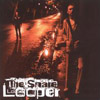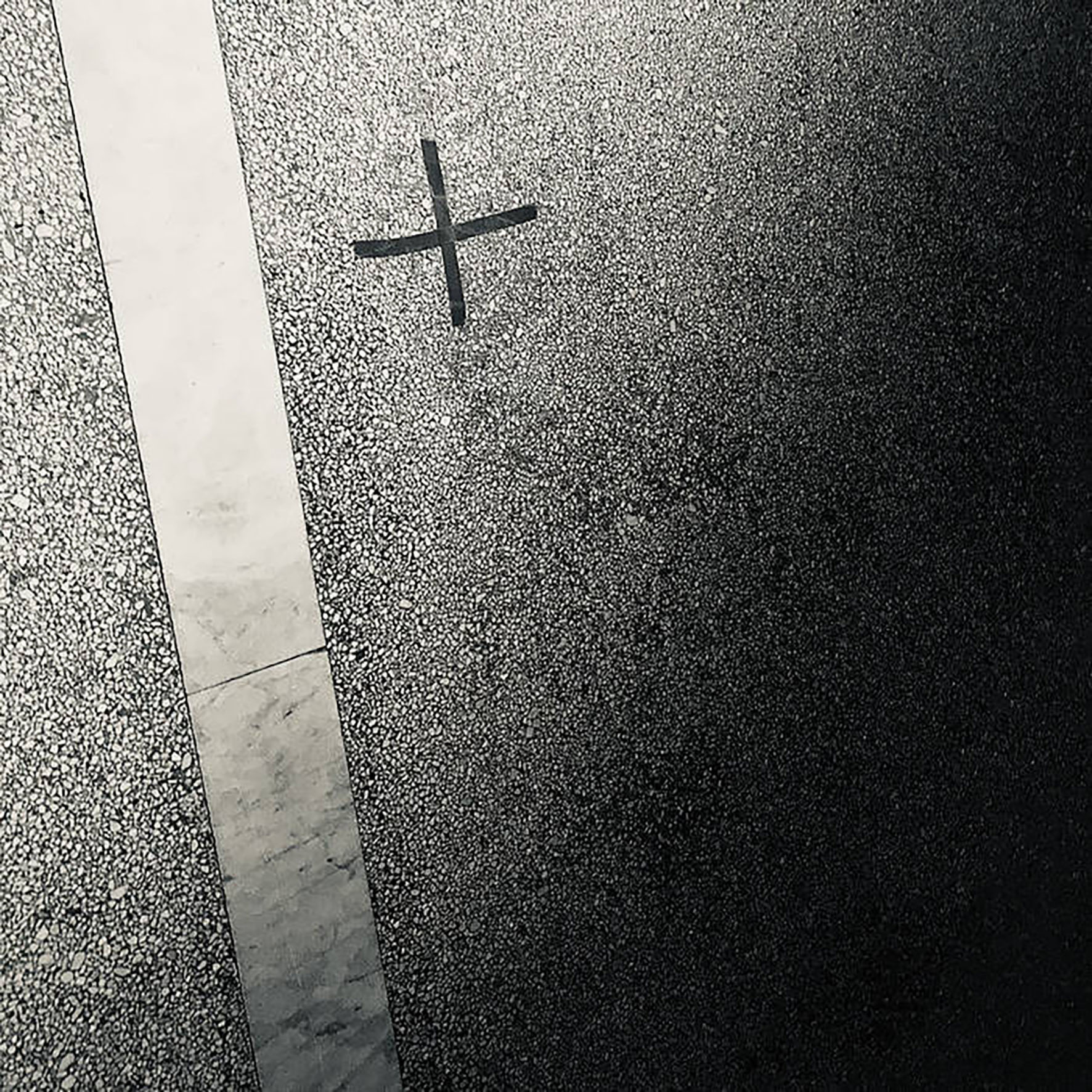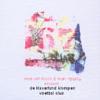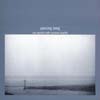 Whether you think you have or not, you've heard Looper. The sideproject turned main project of Stuart David, departed bass player oftwee rock outfit Belle and Sebastian, Looper have had music featured incommercials and films - 'Mondo '77' from their 2000 offering "TheGeometrid" was a featured track in Cameron Crowe's disastrous "VanillaSky". The band is essentially David, his wife Karn, and his littlebrother Ronnie Black. On this album, however, Looper's first for MuteRecords, it would seem that David has a few other collaborators whohave changed the landscape for Looper forever. The album was inspiredby David's second novel, "The Peacock Manifesto", and - as a partialsettlement of authorship disputes over the novel between David and hismain character Peacock Johnson - the album "features" Peacock andsaxophonist Evil Bob. Whether or not these two exist as more than apublicity vehicle for the new record remains to be seen. However, their"presence" has altered Looper into a noir film soundtrack band with andR&B heart. So, now, whether you've heard Looper or not, you'venever heard Looper like this. "The Snare" is an homage to darkerunderbellies - a dance version of Glen Campbell's "Rhinestone Cowboy",the aim of Peacock Johnson, it isn't. It's far removed from Looper'spoppier fare from first track to the last. It's Looper's seemingtribute to modern music by way of earlier influences. That's right:it's like Looper making an album with Missy Eliott. With the Davidssinging. I know, the description sounds bad. And the record isn't thebest thing Looper have done. In fact, it just smacks of "We know we'vebeen pretty disposable up until now, so here's a more mature album forya!" The whole album has the same drum sound, the same vocals, the samebass sound. It's meant to be a concept album where all tracks tietogether, but they only contain the same elements. There appears to beno growth from previous releases. In fact, the only track that holdsany promise is the final one, 'Fucking Around', and that's because itsounds vaguely like David's time with Belle and Sebastian. I'd give itthe whole record a pass, really, but try it out because it might beyour bag, man.
Whether you think you have or not, you've heard Looper. The sideproject turned main project of Stuart David, departed bass player oftwee rock outfit Belle and Sebastian, Looper have had music featured incommercials and films - 'Mondo '77' from their 2000 offering "TheGeometrid" was a featured track in Cameron Crowe's disastrous "VanillaSky". The band is essentially David, his wife Karn, and his littlebrother Ronnie Black. On this album, however, Looper's first for MuteRecords, it would seem that David has a few other collaborators whohave changed the landscape for Looper forever. The album was inspiredby David's second novel, "The Peacock Manifesto", and - as a partialsettlement of authorship disputes over the novel between David and hismain character Peacock Johnson - the album "features" Peacock andsaxophonist Evil Bob. Whether or not these two exist as more than apublicity vehicle for the new record remains to be seen. However, their"presence" has altered Looper into a noir film soundtrack band with andR&B heart. So, now, whether you've heard Looper or not, you'venever heard Looper like this. "The Snare" is an homage to darkerunderbellies - a dance version of Glen Campbell's "Rhinestone Cowboy",the aim of Peacock Johnson, it isn't. It's far removed from Looper'spoppier fare from first track to the last. It's Looper's seemingtribute to modern music by way of earlier influences. That's right:it's like Looper making an album with Missy Eliott. With the Davidssinging. I know, the description sounds bad. And the record isn't thebest thing Looper have done. In fact, it just smacks of "We know we'vebeen pretty disposable up until now, so here's a more mature album forya!" The whole album has the same drum sound, the same vocals, the samebass sound. It's meant to be a concept album where all tracks tietogether, but they only contain the same elements. There appears to beno growth from previous releases. In fact, the only track that holdsany promise is the final one, 'Fucking Around', and that's because itsounds vaguely like David's time with Belle and Sebastian. I'd give itthe whole record a pass, really, but try it out because it might beyour bag, man.
samples:



 This collection of three sessions shows a group evolving from a whisper to (less a scream, than) the ghost of a mumble. Movietone’s introspective sound is naturally overlooked in a society which places more value on action, fast talking, and loudness. Their music remains elusive to define and to grasp, with a vocal style, choice of instruments, and an arm’s length embrace of folk and improvisational jazz which sets them apart, even from such contemporaries as Third Eye Foundation and Flying Saucer Attack in the post-rock branch of (what can loosely be termed) the Bristol post-rock "scene." The best of their work might be described by the verse (Peter 3:4) "let your adorning be the hidden person of the heart with the imperishable beauty of a quiet spirit."
This collection of three sessions shows a group evolving from a whisper to (less a scream, than) the ghost of a mumble. Movietone’s introspective sound is naturally overlooked in a society which places more value on action, fast talking, and loudness. Their music remains elusive to define and to grasp, with a vocal style, choice of instruments, and an arm’s length embrace of folk and improvisational jazz which sets them apart, even from such contemporaries as Third Eye Foundation and Flying Saucer Attack in the post-rock branch of (what can loosely be termed) the Bristol post-rock "scene." The best of their work might be described by the verse (Peter 3:4) "let your adorning be the hidden person of the heart with the imperishable beauty of a quiet spirit."
 The Legendary Pink Dots' horn player Niels Van Hoorn and Mark Spybey ofDead Voices On Air have been collaborating for a few years now. Neilshas contributed to DVOA live sets, the 'Frankie Pett' album and theSpybey / Mick Harris disc 'Bad Roads, Young Drivers' disc. But thisproject, created while Spybey was a resident of the Van Hoorn householdin The Netherlands, puts the focus almost entirely upon Niels - hishorn playing as well as the various sounds to be found and made amongstthe pastoral riverside setting he calls home. All of this is, ofcourse, thoroughly digitally processed by Spybey, so much so that halfof the 54 minutes passes before a sound typical of a horn is heard. Butthe atypical is just as welcome here as the possibilities of the hornplaying are explored. After a few listens, I've become as fascinated asSpybey is with the sounds he has gathered and shaped. In the extensiveliner notes he explains the process involved for each track, howexactly he recorded Niels or what exactly we're hearing, such as micescurrying about the barn, a power generator, Niels welding, riverboats, distorted raindrops, an old jazz record, etc. Most of the trackssimply, slowly, quietly flow - presumably like the nearby river Waal -the music being something pleasantly in-between melodic and abstract."South Side Style", "Empress of the Blues" and "Stockyard Strut" arelittle more than beautifully melancholy flute, tenor and baritone saxphrases, respectively. A couple of tracks are a bit more mischievous."Jelly Lord" is a backwards, overdriven horn anthem for the Land ofClover, darkly underpinned by nearing thunderstorms. And "Scrapper Boy"erupts into a buzzing machine drone akin to Mika Vainio's solo work.Spybey and Van Hoorn have created not only a souvenir of a time andplace of their friendship, but a really lovely soundtrack for others toshare in. 'Klaverland' might just end up on my best of 2002 list.
The Legendary Pink Dots' horn player Niels Van Hoorn and Mark Spybey ofDead Voices On Air have been collaborating for a few years now. Neilshas contributed to DVOA live sets, the 'Frankie Pett' album and theSpybey / Mick Harris disc 'Bad Roads, Young Drivers' disc. But thisproject, created while Spybey was a resident of the Van Hoorn householdin The Netherlands, puts the focus almost entirely upon Niels - hishorn playing as well as the various sounds to be found and made amongstthe pastoral riverside setting he calls home. All of this is, ofcourse, thoroughly digitally processed by Spybey, so much so that halfof the 54 minutes passes before a sound typical of a horn is heard. Butthe atypical is just as welcome here as the possibilities of the hornplaying are explored. After a few listens, I've become as fascinated asSpybey is with the sounds he has gathered and shaped. In the extensiveliner notes he explains the process involved for each track, howexactly he recorded Niels or what exactly we're hearing, such as micescurrying about the barn, a power generator, Niels welding, riverboats, distorted raindrops, an old jazz record, etc. Most of the trackssimply, slowly, quietly flow - presumably like the nearby river Waal -the music being something pleasantly in-between melodic and abstract."South Side Style", "Empress of the Blues" and "Stockyard Strut" arelittle more than beautifully melancholy flute, tenor and baritone saxphrases, respectively. A couple of tracks are a bit more mischievous."Jelly Lord" is a backwards, overdriven horn anthem for the Land ofClover, darkly underpinned by nearing thunderstorms. And "Scrapper Boy"erupts into a buzzing machine drone akin to Mika Vainio's solo work.Spybey and Van Hoorn have created not only a souvenir of a time andplace of their friendship, but a really lovely soundtrack for others toshare in. 'Klaverland' might just end up on my best of 2002 list. The Silverman is keyboardist Phil Knight, a founding and current memberof The Legendary Pink Dots. This is his third solo album following upon 1995's 'Dream Cell' for Terminal Kaleidoscope and 1998's'Silvermandalas', also for Soleilmoon. Like the latter, this disc issimply comprised of numbered parts, in this case six interconnectedtracks ranging from two to nearly 13 minutes in length. The title isperfect as the album was motivated by the death of his father and theplaces Knight lived and visited while working upon it. Each setting isunique and incorporates found as well as synthesized sounds. Part onefeatures ghostly metallic bell tones amidst a dense, shifting fog. Twomoves into a more electronic territory as a sequence of synth notes,waves and background bass bumps plays out. Three glistens as a dulcimerand subdued electronics dance with an elegant array of winter soundssuch as crumpled snow, cracked ice and water. It's really something howit gracefully slips in and out of consciousness. Four and five arebrief interludes of mechanical whirrings, swooping tones, more bells,rain (or maybe fire) and birdsong. And six is the requiem itself.Steady synth voices become masked by wind and the sounds of trains,evoking cross country movement as well as sorrow. Much like DavidTibet's homage to his departed father, Current 93's 'Sleep Has HisHouse', The Silverman has respectfully paid tribute to his own fatherwith a very lovely album, his best yet.
The Silverman is keyboardist Phil Knight, a founding and current memberof The Legendary Pink Dots. This is his third solo album following upon 1995's 'Dream Cell' for Terminal Kaleidoscope and 1998's'Silvermandalas', also for Soleilmoon. Like the latter, this disc issimply comprised of numbered parts, in this case six interconnectedtracks ranging from two to nearly 13 minutes in length. The title isperfect as the album was motivated by the death of his father and theplaces Knight lived and visited while working upon it. Each setting isunique and incorporates found as well as synthesized sounds. Part onefeatures ghostly metallic bell tones amidst a dense, shifting fog. Twomoves into a more electronic territory as a sequence of synth notes,waves and background bass bumps plays out. Three glistens as a dulcimerand subdued electronics dance with an elegant array of winter soundssuch as crumpled snow, cracked ice and water. It's really something howit gracefully slips in and out of consciousness. Four and five arebrief interludes of mechanical whirrings, swooping tones, more bells,rain (or maybe fire) and birdsong. And six is the requiem itself.Steady synth voices become masked by wind and the sounds of trains,evoking cross country movement as well as sorrow. Much like DavidTibet's homage to his departed father, Current 93's 'Sleep Has HisHouse', The Silverman has respectfully paid tribute to his own fatherwith a very lovely album, his best yet. Philip Jeck always seems to surprise and surpass expectation every timeI hear him perform. I've heard him spin out haunting loops for avantgarde dancers to strut about to in art spaces. I've heard him spinstickered platters alongside guitarist Vergil Sharkya and fractalvideographer Gerd Willschvetz in an underground car park in Liverpool.I've heard his scaffolded ranks of old car boot turntables mash upcrackly memory traces from worn needles bumping into wires and stickersin a London gallery. I've heard him go walkabout at a festival opening,cutting up dictaphone recordings with the pause button. After hisambitious quartet of lengthily (r)evolving 'Vinyl Codas' released bythe Intermedium label, he returns to Touch with seven shorter liveexcerpts from performances in Liverpool, Manchester, Osaka, Tokyo andVienna. With only a single sample Casio keyboard to aid the junkyardturntables spinning varispeed deteriorating vinyl, he necessarilylimits his options but unlocks endless potentials from abundantalternate histories coded in the grooves. When he loops records at lowspeed, worn old cliches morph into haunting new textures. A phantasmalkeyboard hoot that forms the bedrock of "Pax" sounds like it might'vemorphed slowly from a cheesy old J. Geils Band charity shop hit."Above" cuts scratchy old vinyl into train chug clunks and chickensquawk with some slowed speech narration to explain what exactly isn'tgoing on. "Lambing" is a home recording, soundtracking a film by LucyBaldwyn, and wouldn't sound out of place on his previous Touch CD'Surf,' with groaning ghost vox repeating an eerie refrain over thecrackle'n'drone spin, until slowly a sunrise glow cracks dawn beneaththe locked groove rhythm faultlines. "Vienna Faults" waltz around likea music box in a tumble dryer. There's some crazily mangled sitar"Below," reversing into hollow metal hammering, cut dead by a suddendescending blues guitar riff. "Open" seems to rework familiar noisesfrom 'Surf' into a noisier delayed clatter. "Close" does just that,with some more sitar loops, more meditative but just as playful asbefore. Stray starry plucked fragments drop in at odd angles until aloop locks and deteriorates to a stutter as a single piano note bashesto infinity. A ghost choir of Hamaiian folk singers emerges from thevinyl crackle fog to bid a fond farewell. If you haven't heard PhilipJeck before, this is not his most immediate recording and 'Surf' or the'Vinyl Coda' series might be better ports of entry. He has not yet leftthe building.
Philip Jeck always seems to surprise and surpass expectation every timeI hear him perform. I've heard him spin out haunting loops for avantgarde dancers to strut about to in art spaces. I've heard him spinstickered platters alongside guitarist Vergil Sharkya and fractalvideographer Gerd Willschvetz in an underground car park in Liverpool.I've heard his scaffolded ranks of old car boot turntables mash upcrackly memory traces from worn needles bumping into wires and stickersin a London gallery. I've heard him go walkabout at a festival opening,cutting up dictaphone recordings with the pause button. After hisambitious quartet of lengthily (r)evolving 'Vinyl Codas' released bythe Intermedium label, he returns to Touch with seven shorter liveexcerpts from performances in Liverpool, Manchester, Osaka, Tokyo andVienna. With only a single sample Casio keyboard to aid the junkyardturntables spinning varispeed deteriorating vinyl, he necessarilylimits his options but unlocks endless potentials from abundantalternate histories coded in the grooves. When he loops records at lowspeed, worn old cliches morph into haunting new textures. A phantasmalkeyboard hoot that forms the bedrock of "Pax" sounds like it might'vemorphed slowly from a cheesy old J. Geils Band charity shop hit."Above" cuts scratchy old vinyl into train chug clunks and chickensquawk with some slowed speech narration to explain what exactly isn'tgoing on. "Lambing" is a home recording, soundtracking a film by LucyBaldwyn, and wouldn't sound out of place on his previous Touch CD'Surf,' with groaning ghost vox repeating an eerie refrain over thecrackle'n'drone spin, until slowly a sunrise glow cracks dawn beneaththe locked groove rhythm faultlines. "Vienna Faults" waltz around likea music box in a tumble dryer. There's some crazily mangled sitar"Below," reversing into hollow metal hammering, cut dead by a suddendescending blues guitar riff. "Open" seems to rework familiar noisesfrom 'Surf' into a noisier delayed clatter. "Close" does just that,with some more sitar loops, more meditative but just as playful asbefore. Stray starry plucked fragments drop in at odd angles until aloop locks and deteriorates to a stutter as a single piano note bashesto infinity. A ghost choir of Hamaiian folk singers emerges from thevinyl crackle fog to bid a fond farewell. If you haven't heard PhilipJeck before, this is not his most immediate recording and 'Surf' or the'Vinyl Coda' series might be better ports of entry. He has not yet leftthe building. Swedish group Pallin has chosen a very difficult path for themselves inthe modern age of Swedish music. A market and genre that usuallyincludes fairly horrible bands with grating pop sensibilities has nouse for Pallin, who create guitar-and-strings-based simple compositionsthat are perfect background music for your Saturday afternoon fishingtrip. "A One Bedroom Apartment," then, is a decidedly quiet affair, butnot without moments of jarring efficiency. The first release I've heardby the band, this collection is assured, playful, yet not entirelystunning. The only thing I felt throughout my listening to this CD thattroubled me was the overwhelming feeling that I'd heard it all before,just by some other band. Some tracks were reminiscent of EricBachmann's work with Crooked Fingers and Barry Black, others soundedvaguely like structures on a gybe! record. But if you're going toremind people of other bands, you can't go wrong with those two. AndPallin rarely goes wrong. This music is soothing without pretense,gorgeous without effort, and memorable without complete originality. Itis a "yawner" in areas: the first moments of the title track left meclose to the longest sleep since Rip Van Winkle, and most tracks dotake a few moments to build to their true happy hunting ground.However, the musicians are confident in their abilities, and do holdcommand over their instruments. I haven't heard twang like this on mostcountry records of recent memory, and that's precisely where it shouldbe found. I could have done without the few moments of field recording,but, ultimately, it doesn't really matter by the final track, which isjust plain lovely while entirely too short. Easily my pick of the week.
Swedish group Pallin has chosen a very difficult path for themselves inthe modern age of Swedish music. A market and genre that usuallyincludes fairly horrible bands with grating pop sensibilities has nouse for Pallin, who create guitar-and-strings-based simple compositionsthat are perfect background music for your Saturday afternoon fishingtrip. "A One Bedroom Apartment," then, is a decidedly quiet affair, butnot without moments of jarring efficiency. The first release I've heardby the band, this collection is assured, playful, yet not entirelystunning. The only thing I felt throughout my listening to this CD thattroubled me was the overwhelming feeling that I'd heard it all before,just by some other band. Some tracks were reminiscent of EricBachmann's work with Crooked Fingers and Barry Black, others soundedvaguely like structures on a gybe! record. But if you're going toremind people of other bands, you can't go wrong with those two. AndPallin rarely goes wrong. This music is soothing without pretense,gorgeous without effort, and memorable without complete originality. Itis a "yawner" in areas: the first moments of the title track left meclose to the longest sleep since Rip Van Winkle, and most tracks dotake a few moments to build to their true happy hunting ground.However, the musicians are confident in their abilities, and do holdcommand over their instruments. I haven't heard twang like this on mostcountry records of recent memory, and that's precisely where it shouldbe found. I could have done without the few moments of field recording,but, ultimately, it doesn't really matter by the final track, which isjust plain lovely while entirely too short. Easily my pick of the week. Anytime I read about a band that creates "post-rock soundscapes" thesedays, I tend to cringe. It's a pretty generic term that usually implies"Try this next time you have trouble sleeping." Long, drawn-out,sprawling epics that top the ten minute mark are also not unheard ofwith this description. Nevertheless, sometimes a band slips throughthat fine veil of half mediocrity/half meandering to create somebeautiful music. On previous records, both artists involved on "PassingSong" have created music that suggests they are capable of breakingthrough, but need more time to develop. Working together on thisrelease hasn't helped them one bit: they're still both stuck in thatrealm. This release isworth listening to, but I doubt you'll take anything away from it thatwill change your life. It is what it is: simple song structures with acapable voice attached that ultimately go nowhere new or special. Theydon't touch a nerve. They don't even scratch the surface of the skin.They hang there, in the air, waiting for that defining moment that willseparate the wheat from the chaff. And it never comes. Having saidthat, a few of the tracks do have incredible potential, and I see somegreat things coming from this pairing down the road. The opening track,'Only When You Sleep', smolders in its languid drawl, and the justplain scary 'Snow Sunrise' purports to decimate us all even though itnever manages to. A good set by two powerful creative forces thatdeserve more notice. Maybe with another set like this one, they willget it.
Anytime I read about a band that creates "post-rock soundscapes" thesedays, I tend to cringe. It's a pretty generic term that usually implies"Try this next time you have trouble sleeping." Long, drawn-out,sprawling epics that top the ten minute mark are also not unheard ofwith this description. Nevertheless, sometimes a band slips throughthat fine veil of half mediocrity/half meandering to create somebeautiful music. On previous records, both artists involved on "PassingSong" have created music that suggests they are capable of breakingthrough, but need more time to develop. Working together on thisrelease hasn't helped them one bit: they're still both stuck in thatrealm. This release isworth listening to, but I doubt you'll take anything away from it thatwill change your life. It is what it is: simple song structures with acapable voice attached that ultimately go nowhere new or special. Theydon't touch a nerve. They don't even scratch the surface of the skin.They hang there, in the air, waiting for that defining moment that willseparate the wheat from the chaff. And it never comes. Having saidthat, a few of the tracks do have incredible potential, and I see somegreat things coming from this pairing down the road. The opening track,'Only When You Sleep', smolders in its languid drawl, and the justplain scary 'Snow Sunrise' purports to decimate us all even though itnever manages to. A good set by two powerful creative forces thatdeserve more notice. Maybe with another set like this one, they willget it. 'Imagination of Rhythm' and 'Unknown Source of Egoism' are not exactlyfavorable track titles for a band's debut release. And given what themembers of Rope have been through, it almost seems like high time foranother slap in the face to go with their hardships. "Fever" wasrecorded in 2000 in the band's native Poland, after which they sold alltheir belongings and moved to America. Land of opportunity or not,America may not be quite ready for Rope. Slow to build, almostcacaphonous in places, and even a little bit irritating, their music isthat of an unskilled child: unsure, monotonous, repetitive and amateur.It's not altogether unpleasing, though. As first recordings go, "Fever"is pretty good. You can definitely hear the influences on their music,and you can tell that they're searching for that sound of their own.It's all pretty eerie, as each track jars and thumps, but soars withsharp sounds, escalating towards God knows what. 'Liquid Courage' isactually the most complete track, and the most calm for the first 3minutes or so. Then it descends into the same noise that mars the othertracks. Fortunately, there is room for improvement. Since Chris Drazekand Robert Iwanik are now living in Chicago, they'll have plenty tohear that will affect their pallette. I predict the next Rope recordwill sound nothing like this. And I look forward to hearing it. Thisone was just a bit too much for me.
'Imagination of Rhythm' and 'Unknown Source of Egoism' are not exactlyfavorable track titles for a band's debut release. And given what themembers of Rope have been through, it almost seems like high time foranother slap in the face to go with their hardships. "Fever" wasrecorded in 2000 in the band's native Poland, after which they sold alltheir belongings and moved to America. Land of opportunity or not,America may not be quite ready for Rope. Slow to build, almostcacaphonous in places, and even a little bit irritating, their music isthat of an unskilled child: unsure, monotonous, repetitive and amateur.It's not altogether unpleasing, though. As first recordings go, "Fever"is pretty good. You can definitely hear the influences on their music,and you can tell that they're searching for that sound of their own.It's all pretty eerie, as each track jars and thumps, but soars withsharp sounds, escalating towards God knows what. 'Liquid Courage' isactually the most complete track, and the most calm for the first 3minutes or so. Then it descends into the same noise that mars the othertracks. Fortunately, there is room for improvement. Since Chris Drazekand Robert Iwanik are now living in Chicago, they'll have plenty tohear that will affect their pallette. I predict the next Rope recordwill sound nothing like this. And I look forward to hearing it. Thisone was just a bit too much for me. Steinbrüchel zooms in from Zurich weaving unique cyclical digitalhisscapes. On this 3" CD he repeatedly unwinds a coiled wire ofimmersive hi-tone ambience in exponentially swelling chunks. Betweeneach are short silent gaps which have been given their own track ID.The first track is seconds of silence and each odd numbered track lopsa couple of seconds off its silent spell. Each time round more isrevealed, until track 18 the full eight minute masterpiece unfurls.This might seem a bit of a pointlessly conceptual approach, but itworks brilliantly, as each new track paints in a little more detail.About halfway through it's evolution, a bass drone undertow bolstersthe meticulous circling scatter-glitch'n'sinewave. Steinbrüchel israising the stakes for anyone trying their hand at 21st century ambientcomputer music, and my powers of description seem utterly inadequte toconvey the mysterious alien beauty of 'zwischen.raum.' The shortduration of the 3" disc works in his favour, leaving me curious to hearmore. This CD will probably appeal to those who enjoy the fine honedtones of Fennesz, Thomas Köner, Ryoji Ikeda, Mika Vainio and OrenAmbarchi. Words are not much use here, I've been trying and failing forweeks now to do this CD justice. Just try the sound samples.
Steinbrüchel zooms in from Zurich weaving unique cyclical digitalhisscapes. On this 3" CD he repeatedly unwinds a coiled wire ofimmersive hi-tone ambience in exponentially swelling chunks. Betweeneach are short silent gaps which have been given their own track ID.The first track is seconds of silence and each odd numbered track lopsa couple of seconds off its silent spell. Each time round more isrevealed, until track 18 the full eight minute masterpiece unfurls.This might seem a bit of a pointlessly conceptual approach, but itworks brilliantly, as each new track paints in a little more detail.About halfway through it's evolution, a bass drone undertow bolstersthe meticulous circling scatter-glitch'n'sinewave. Steinbrüchel israising the stakes for anyone trying their hand at 21st century ambientcomputer music, and my powers of description seem utterly inadequte toconvey the mysterious alien beauty of 'zwischen.raum.' The shortduration of the 3" disc works in his favour, leaving me curious to hearmore. This CD will probably appeal to those who enjoy the fine honedtones of Fennesz, Thomas Köner, Ryoji Ikeda, Mika Vainio and OrenAmbarchi. Words are not much use here, I've been trying and failing forweeks now to do this CD justice. Just try the sound samples.
